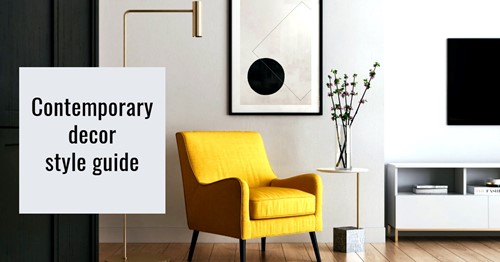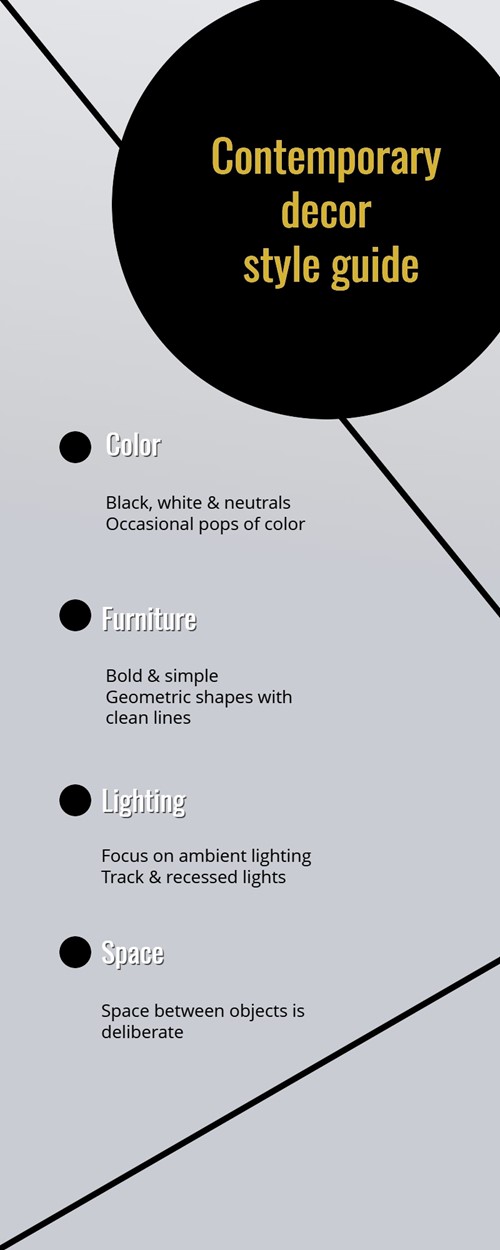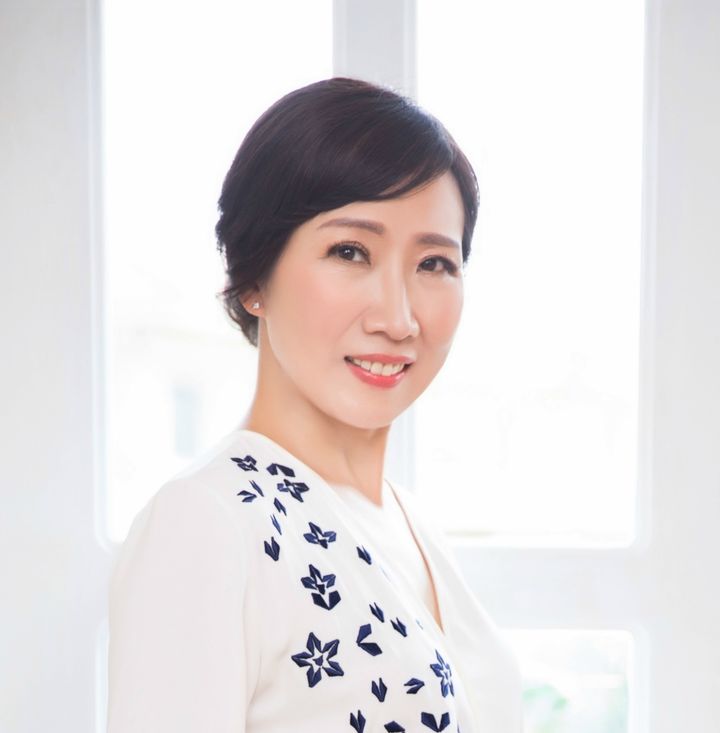
Homeowners are often searching for a way to keep their home updated without the overwhelming amounts of clutter that seem to come with upgrading designs or styles. That’s where contemporary decor comes into play.
The contemporary style is regularly confused with modern design, but there are a few key differences between the two. The most significant difference lies with the baseline of each style. Modern design typically touts an era where furniture was soft and rounded, with groovy accessories and modern decor from the 1950s and 1960s.
Contemporary style refers to clean and simple lines, accompanied by art deco wall art and furniture that accentuates horizontal lines.
Curious about what other features may be included in this simplistic, clutter-free interior design? Here are a few quick and easy basics for one of the hottest design styles to enter interior design.
Contemporary interior design often boasts neutral tones, such as beige, peach and sandy hues. When accenting the design itself, black and white abstract art pieces or clean lines featured on walls in a black or white paint are usually the easiest way to bring out the potential in contemporary design.
To give your room a distinct flair, add a pop of color with decorative accessories. Be sure to use them sparingly to avoid any unnecessary clutter.
Using furniture as decorative pieces ranks high in the interior design playbook. Using pieces that are bold with a simple elegance and clean, geometric shapes is a must for this style.
For example, a contemporary living room may utilize an off-white sofa with clean horizontal lines around the backing and arm rests. The legs may be something simple, such as black steel supports.
Lighting provides a key element to the contemporary style. Most contemporary lighting focuses on ambient glow, exposed tracks and recessed fixtures. For those who enjoy the chic aesthetic of hanging light fixtures, try pendant lights with a simple design in black for lighter rooms, white for darker rooms or neutral for those in between.
Creating deliberate space between objects is a contemporary design must. The use of negative space, or the empty areas throughout the room, helps open the room while providing a clear focal point with minimal effort.
Space can be incorporated by utilizing the preexisting straight lines in the room, such as tables in the dining room or art deco accessories lining the walls. Just follow the same horizontal line to provide a pathway for your chosen room’s design.
These elements have catapulted contemporary design into one of the most distinct design styles used by those who enjoy the minimalist aesthetic. It blends well with bold but sparing pieces and helps keep clutter to a minimum.

Whether you want to add a little extra flair to your current design for a more Boho-chic vibe or simply embrace the minimalist style, these contemporary interior design basics will help you solidify your perfect style.

Susan Shuxian Hu has been a dedicated realtor serving in Silicon Valley since 2010. With great passion, outstanding negotiation skills and due diligence, she has helped many buyers and sellers in their real estate needs. Living in West San Jose for more than 14 years, she has broad knowledge in Cupertino, West San Jose, Los Altos and Saratoga. She has enormous patience working with buyers and never tired of showing all possible properties that may fit client’s needs. Clients appreciate her best service to their satisfaction. She specialized in luxurious real estate purchase in Los Altos, Cupertino, Saratoga and Palo Alto. She also helped friend and past client’s referral working in San Francisco, Foster City and far reached Bay Area.
Susan Shuxian Hu was graduated in East China Normal University in Shanghai with bachelor and master degrees in Bio science. She came to US in 1989 and earned her Ph.D. in Molecular Genetics in Texas A&M University in 1996. After one year of postdoc in Southern Florida University in Tampa, she moved back to Orlando with her family and started working in Lucent Technologies. In 2002, Susan moved to California, Silicon Valley joined a start-up company. Since then she worked in high tech Corporation till 2009. Driven by her dream job pursuing, she found her passion working in sales by helping people in real estate after one year of education in De Anza business and real estate law study. Since then, she has been serving many people in Bay Area for their real estate needs.
With bilingual advantage, she has been actively working with Chinese immigrants as well as local engineers and residents. With rich high tech background and connection with Chinese community, Susan has served in luxurious real estate in last a couple of years.